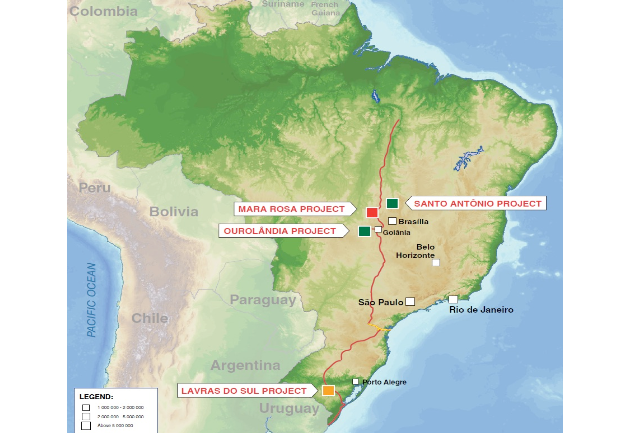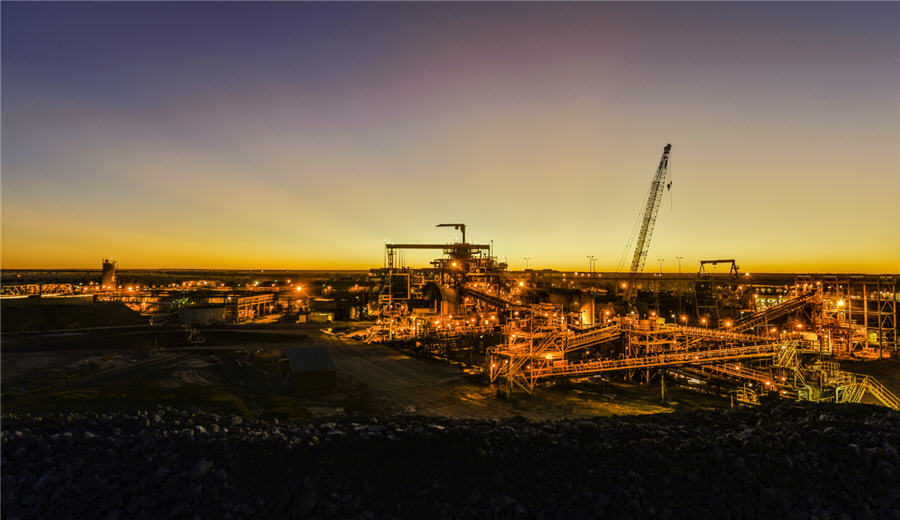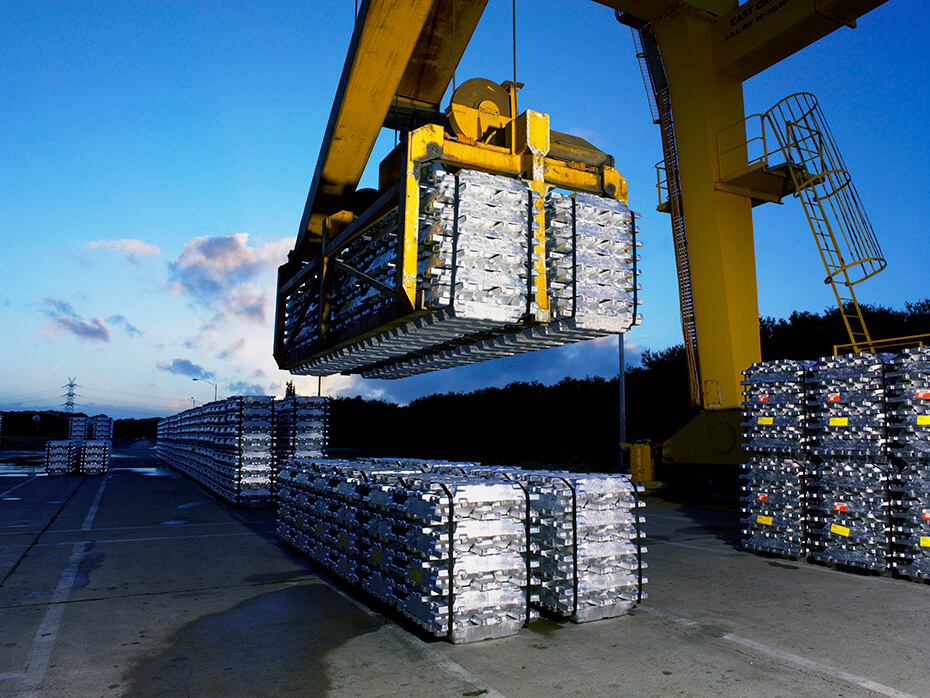Perfect timing: Amarillo Gold achieves key milestone in rising gold market
Marc Davis of BNWNews profiles Amarillo Gold, a company that is finally poised to capitalize on a resurgent gold market.

Amarillo’s Projects in Brazil
It’s Buddy Doyle’s day of reckoning—finally. At last, he knows that his big gamble is going to pay off.
His small gold exploration and development company, Amarillo Gold Corp. (AGC:TSX.V), just got preliminary approval to build a gold mine in Brazil.
This now sets the stage for the construction of a mine, which requires one more permit. In other words, Amarillo Gold is finally poised to capitalize on a resurgent gold market.
For Doyle, this milestone development isn’t just about technically derisking a gold project that he’s been developing for over a decade. It’s also a triumph of the “quality over quantity” mindset that motivates him.
Such thinking makes him something of a contrarian in the gold exploration business. Most geologists are obsessed with so-called “elephant hunting,” which involves trying to find deposits that are upwards of 10 million ounces in size.
However, Doyle has already been there and done that. His claim to fame is being integral to an exploration team that discovered the giant 45-million-ounce Lihir gold mine in Papua New Guinea, by far one of the biggest mines ever found.
That was in his younger days, when he was as recklessly adventurous as he was ambitious, he says. So he remained undaunted by bouts of malaria, foot rot and even a life-threatening helicopter crash as he slogged through jungle terrain in search of the geological jackpot that became Lihir.
Now in his 50s, he says he’s much more of a cool-headed pragmatist. Which is why he’s happy to focus on grooming a far more modestly sized gold deposit in central Brazil, near the town of Mara Rosa.
It contains a little over one million ounces. But its biggest selling point is that it promises to become one of the lowest-cost mines in the world. And it can be monetized at a fraction of the cost of any big-league gold discovery, like Lihir.
Magic in the Metrics?
In fact, the Posse deposit also has all the right characteristics and operational logistics to become a very lucrative gold mine, which is a considerable rarity these days, Doyle says.
A 2011 prefeasibility study (a preliminary blueprint for a mine) that was independently conducted for Amarillo computes production and refining costs of around US$524/ounce (US$524/oz).
Since then, Brazil’s currency has dropped around 50% in value against the Canadian dollar. At current exchange rates, this means that Amarillo’s mining costs would be significantly lower than the original US$524/oz estimate.
By comparison, most mining companies—big or small—are typically paying around US$1,200/oz to extract gold. This helps explain why most of them have been losing money in recent years.
So exactly how is Amarillo Gold planning to seriously buck an industry trend by keeping costs to an absolute minimum?
First, the deposit is relatively high grade (averaging 1.67 grams per tonne) considering that it’s near the surface. This means that it can be inexpensively mined as an open pit (a quarry-like operation).
An average of 125,000 oz gold per annum is expected to be mined this way for the first few years of the mine’s life. This scenario offers a relatively fast anticipated payback on capital costs of only three years.
Low-Hanging Fruit
Amarillo represents one of the ripest plums among the ranks of aspiring gold miners in Brazil. With the company’s projected low operating costs, putting Posse into production represents a low-risk, high-reward opportunity and could be a huge competitive advantage to a potential suitor in today’s marketplace.
Derisked gold projects like Posse represent rich veins of opportunity for supply-hungry major gold producers. In other words, they can be commercialized relatively quickly and inexpensively. And that’s a big deal for gold producers that are increasingly focused on generating more near-term flow without committing to huge cash outlays.
Posse’s appeal to prospective suitors is further sweetened by the fact that it is located in a well-established mining district. There are several relatively proximal mines, including Yamana Gold Inc.’s (YRI:TSX; AUY:NYSE; YAU:LSE) Chapada mine (35 kilometers away), which has a mill to process ore from Posse.
There’s also plenty of other regional infrastructure in place to support a new mine. This includes a hydroelectric power grid, a skilled labor force and even a freeway. All of which promises to minimize projected capex (mine construction) costs, as well as operational expenditures, at Posse.
It would, therefore, make sense for one of the region’s big gold producers—namely Kinross Gold Corp. (K:TSX; KGC:NYSE), AngloGold Ashanti Ltd. (AU:NYSE; ANG:JSE; AGG:ASX; AGD:LSE) and Yamana Gold—to gobble up Amarillo.
Savoring the Moment
For now, Doyle is content that Amarillo has finally cleared all the regulatory hurdles that have held up Posse’s further development for the past several years.
“In the process of making Posse shovel-ready, we’ve demonstrated that we can be a good corporate citizen and a conscientious environmental steward,” he says. “We’re also proving Posse’s suitability to become a very low-cost operation with sizeable annual output and some of the best profit margins in the industry.”
As for whether Posse’s for sale: “No, it isn’t,” Doyle says. Well, not yet, he concedes. His company plans to do some more drilling to hopefully increase the size of the ore resource. And adding additional ounces in the ground seems like a foolproof idea in a rising-tide market for gold prices.
Marc Davis is the editor and publisher of BNWNews. As a former floor trader, investment industry research analyst, journalist at one of the world’s first digital financial news agencies and CBC television business reporter, Davis has a deep background in news media and the capital markets.
Disclosure:
1) The following companies mentioned in the interview are sponsors/billboard advertisers/special situations clients of Streetwise Reports: None. The companies mentioned in this article were not involved in any aspect of the article preparation. Streetwise Reports does not accept stock in exchange for its services. The information provided above is for informational purposes only and is not a recommendation to buy or sell any security.
2) Marc Davis: I or my family own shares of the following companies mentioned in this article: Amarillo Gold. I personally am or my family is paid by the following companies mentioned in this article: None. My company has a financial relationship with the following companies mentioned in this article: None. I determined which companies would be included in this article based on my research and understanding of the sector. Statement and opinions expressed are the opinions of Marc Davis and not of Streetwise Reports or its officers. Marc Davis is wholly responsible for the validity of the statements. Marc Davis was not paid by Streetwise Reports for this article. Streetwise Reports was not paid by the author to publish or syndicate this article.
3) The article does not constitute investment advice. Each reader is encouraged to consult with his or her individual financial professional and any action a reader takes as a result of information presented here is his or her own responsibility. By opening this page, each reader accepts and agrees to Streetwise Reports’ terms of use and full legal disclaimer.
4) From time to time, Streetwise Reports LLC and its directors, officers, employees or members of their families, as well as persons interviewed for articles and interviews on the site, may have a long or short position in securities mentioned. Directors, officers, employees or members of their families are prohibited from making purchases and/or sales of those securities in the open market or otherwise during the up-to-four-week interval from the tim
More News
South32 third-quarter manganese output misses estimates
The world's biggest producer of manganese ore produced 476,000 wet metric tons last quarter.
April 16, 2025 | 03:48 pm
Alcoa reports $20 million tariff hit on imports from Canada
April 16, 2025 | 03:42 pm
{{ commodity.name }}
{{ post.title }}
{{ post.date }}




Comments